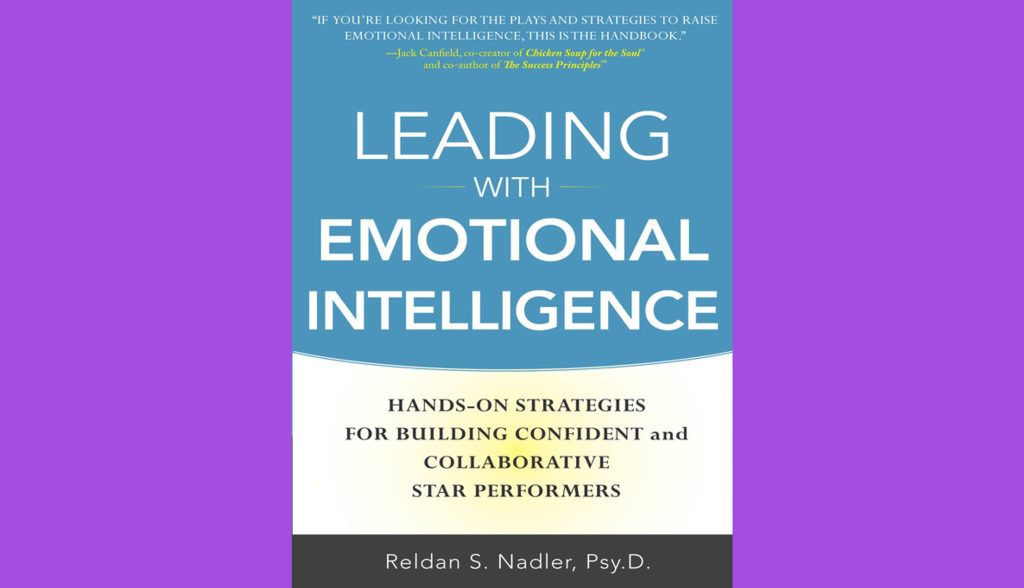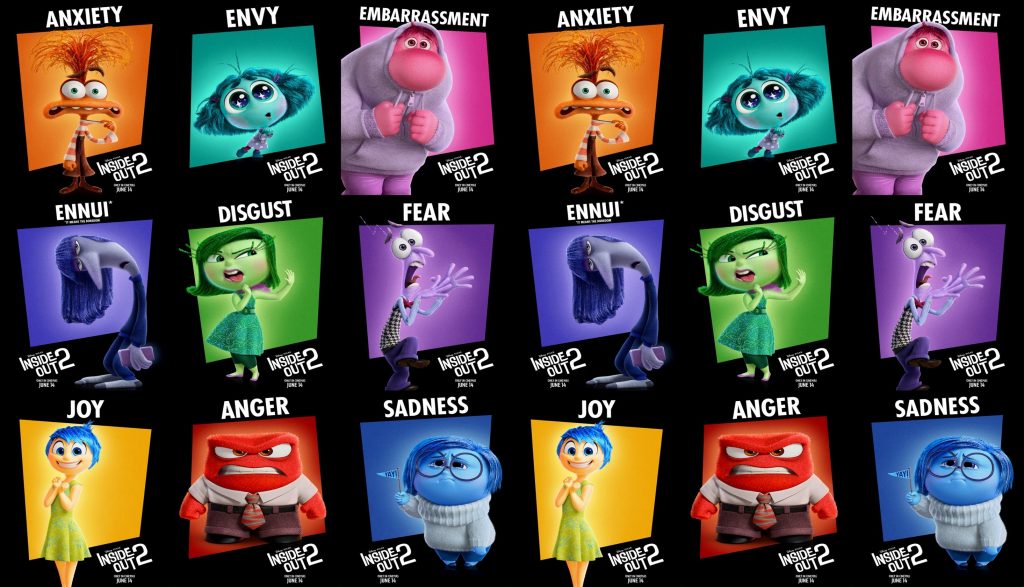
How to use emotional intelligence to lead your team
Business Coaching
Emotional intelligence (EQ) has become a buzzword in recent decades, and for good reason. Research consistently suggests that individuals with high EQ often experience greater success in both personal and professional life.
In this blog post, you’ll discover why EQ is specifically important for leaders and what EQ strategies you can use for your leadership capacity building.
Why EQ matters in the leadership arena in the first place
But first, let’s define EQ. Simply put, EQ is the ability to understand and manage your own emotions, as well as recognize and respond effectively to the emotions of others.
Imagine a translator who can understand and communicate fluently in multiple languages. Leaders with high EQ can “translate” emotions, understanding not just the words spoken but the underlying feelings and effectively communicating their own emotions as well.
Here’s how EQ empowers leaders in:
● Building stronger relationships: High EQ allows leaders to foster trust, respect, and open communication within their teams, creating a truly collaborative and supportive environment by holding onto the values they encourage.
● Making difficult decisions: Leaders with high EQ can approach these challenges with a clear head, considering not only the situation’s logic but also the emotional impact on their team members.
● Managing diverse personalities: Teams are a melting pot of personalities, learning, and working styles. With strong EQ, leaders can effectively manage these differences, leveraging each team member’s strengths while fostering a sense of unity and shared purpose.
● Cultivating resilience: Leaders are not immune to stress and setbacks. High EQ equips leaders with the tools to manage adversity constructively, bouncing back from difficulties and inspiring their teams to do the same.
● Achieving overall success: Studies have shown a strong correlation between high EQ and leadership effectiveness. Leaders with strong EQ are simply more successful in achieving their goals and inspiring their teams to excel.
EQ for everyone: A universal skillset
This blog post is relevant to all leaders regardless of team size or industry. While not a magic bullet for every leadership challenge, EQ provides a foundational skillset that can be honed and developed over time.
Curious About Your EQ?
Did you know that self-awareness is the foundation of EQ? Furthermore, did you know that 95% of people think they’re self-aware, and only 10 to 15% are, according to an HBR study?
Now pause for a few minutes to do the simple self-awareness exercise and ask yourself:
What are my triggers (events, situations, contexts) for:
1. Pleasure?
2. Calm?
3. Stress?
4. Anger?
Once you’ve identified your triggers, ask yourself what you can do to deal with the triggers to downplay unpleasant feelings and enhance pleasant ones. It’s not as easy as it seems at first glance, is it?
Let’s move on to assessing your EQ. There are numerous free and paid online resources available. Here you have a free EQ assessment to get you started.
A high score is fantastic, but if your results indicate room for improvement, this blog post is right for you! Because it dives deeper into practical strategies to cultivate your EQ and become a more effective leader.
The farmer’s guide to leading with EQ
Imagine yourself as a farmer tending to your crops. Here’s a powerful analogy to illustrate key principles of leading with EQ learned from Eric Partaker on LinkedIn (however the real author is unknown):
-
Don’t shout at the crops (understand and guide without pressure):
Effective leaders create an environment where team members feel comfortable taking calculated risks and learning from mistakes. Micromanagement and harsh criticism often stifle motivation and creativity.
-
Don’t blame the crops (acknowledge effort and support growth):
Recognize and appreciate the efforts of your team members. When mistakes occur, focus on solutions and learning opportunities rather than assigning blame.
-
Don’t uproot the crops (be patient with progress and give time to excel):
Growth takes time like a bamboo tree that takes five years to sprout. Set realistic expectations and provide the resources and support your team needs to flourish.
-
Choose the best plants for the soil (match people with problems and embrace diversity):
Write down the strengths and weaknesses of your team members and figure out how you can help them turn their weaknesses into strengths. Delegate tasks based on their unique skills and experiences, and not your expectations.
-
Irrigate and fertilize (invest in their development and praise generously):
Provide opportunities for your team to learn and grow through training, mentorship, and professional development programs.
Organize a weekly breakfast or lunch to celebrate successes big and small to boost morale and motivation. Did you know that it has been scientifically proven that our brain releases dopamine and oxytocin when we celebrate a success?
-
Remove weeds (address negativity and get rid of toxic people):
A negative team member can be a major drain on morale and productivity. Address negativity as soon as you notice it, and if necessary, take steps to remove toxic individuals from the team dynamic.
-
Remember you will have good seasons and bad (anticipate change and prepare them for challenges):
The business is constantly under pressure to change and adapt to challenges posed by the market forces. Prepare your team for change by fostering a culture of adaptability and open communication about all problems.
Before we delve into the specific strategies for developing EQ, let’s establish a crucial distinction between emotions and feelings.
-
Emotions: These are short-lived, automatic responses generated by our “emotional” brain. They act as signals, prompting us to react to a potentially dangerous situation. Think of them as the fire alarm in your head – a quick alert system that is here to protect us, but it can also trigger false alarms.
Common primary emotions include anger, disgust, fear, joy, sadness, and surprise, along with interest and shame.
Emotions can be quite confusing because they can be triggered for unknown reasons or because of potential threats, e.g. your brain could mistake a dry branch for a snake while walking in the woods and trigger fear to activate a fight, flight, or freeze response. And it was just a branch. Imagine what “the branch” would be in a business context.
Moreover, each one of us can call the same emotion with a different name, which makes it even more confusing, e.g. what is fear for you, can be anxiety for someone else. If you want to know more about emotion variations, take a look at Plutchnik’s wheel of emotions.
-
Feelings: These are the physical sensations we experience in response to an emotion. They can be a tightness in your chest, a racing heart, or butterflies in your stomach. Feelings are the body’s interpretation of the emotional signal from the brain.
Understanding this distinction is key to developing EQ. By recognizing the initial emotional trigger (anger, for example), we can then become aware of the resulting feelings (tightness in the chest) and choose a more mindful response.
Now that we’ve laid the foundation, let’s explore the key strategies for cultivating your EQ:
1. Emotional self-regulation
● Observe your emotions: Pay attention to your automatic thoughts and reactions and the beliefs, attitudes, or values behind them. When you feel a surge of anger, for instance, take a moment to acknowledge it and identify the thought triggering it rather than act impulsively.
● Accept and welcome your emotions: Don’t judge yourself for feeling a certain way. Remind yourself that your brain can make mistakes in the huge mountain of information (around 7-9 full-length movies), it handles every day.
That’s why it is important to welcome each emotion and ask what it wants from you. This little conversation can make a huge impact on your emotional response.
● Mindfulness and meditation: Practices like mindfulness and meditation can train your brain to become more aware of your emotions and develop a space between the stimulus and your response. This space allows for a more considered and controlled reaction.
2. Managing emotional contagion
● Emotional contagion is the tendency to catch the emotions of others or transfer our emotional state to others. For example, if a team member is feeling stressed, the stress can easily spread to others. Or if you show up in the office with an optimistic attitude, you might “infect” the entire company with a positive emotion.
This is extremely important for leaders because you exert considerable influence due to your position, whether you like it or not.
● Regulating emotional contagion begins with self-awareness. Recognize how the emotions of others are affecting you and how you influence others. Take a deep breath and center yourself before responding.
Change the room or seat if that doesn’t help because changing the environment is the first step we can take to make it easier for our mind and body.
3. Setting emotional boundaries
Healthy emotional boundaries are essential for well-being. They define what is acceptable and unacceptable behavior in your interactions with others.
● Define your boundaries: Identify what drains your energy or makes you feel uncomfortable. This could be constant negativity, gossip, or taking on other people’s problems.
● Communicate your boundaries: Respectfully but firmly communicate your boundaries to others, for example, “I appreciate you needing to vent, but right now I’m feeling overwhelmed. Can we talk about this later?”
● Enforce your boundaries: Don’t feel compelled to give in to emotional manipulation if people try to instill irrational fear, unsubstantiated guilt, or unreasonable responsibility. Sticking to your boundaries shows self-respect and encourages others to do the same.
4. Resolving conflict
Conflict is inevitable in any team setting. Emotionally intelligent leaders can handle these situations constructively by distinguishing:
● Internal conflict: Acknowledge and address your own internal conflicts and frustrations. Try to identify the triggers that caused your conflict and find their common positive intention. Or talk to a trusted friend or therapist if needed.
● External conflict: Actively listen to the other person’s perspective by getting into their shoes. Focus on finding solutions rather than assigning blame, finding excuses, or denying the whole situation by taking the neutral observer’s perspective first. Then focus on what the other person wants and what you want in the end. This is the so-called 3-2-1 conflict resolution principle.
● Interdepartmental conflict: Act as a neutral mediator to facilitate discussions between the departments and help them find common ground and find at least one solution that benefits everyone. You may also conduct a thorough root cause analysis.
5. Developing empathetic accuracy
Empathy is the ability to understand and share the feelings of another person. Empathetic accuracy takes it a step further – it’s the ability to accurately perceive and understand the emotions of others.
● Nonverbal cues: Pay attention to nonverbal cues like body language, facial expressions, and voice tone.
● Active listening: Truly listen to what someone is saying, both verbally and nonverbally, by looking into the eyes, nodding frequently, and asking clarifying questions to ensure you understand their perception.
● Practice perspective-taking: Try to see things from the other person’s point of view. What is going on in their lives now? How do they feel right now? What might be causing them to feel this way? How would a colleague perceive the situation?
6. Developing emotional resilience
Emotional resilience is the ability to bounce back from setbacks and adversity.
● Challenge negative thoughts: Don’t dwell on negative self-talk, for example, that you are not good enough for the task or that nothing makes sense. Reframe negative thoughts into more positive and realistic perspectives by asking yourself whether this is 100% true and what proof you have that it is not always the case. Or talk to yourself as you would to a friend in need.
● Focus on solutions: Instead of dwelling on the problem, focus on finding solutions and learning from the experience.
● Build a support system: Surround yourself with positive and supportive people who will uplift you during challenging times.
Interesting and practical resources for developing EQ
Pioneered by Daniel Goleman’s influential book “Emotional Intelligence” in 1995, EQ has captured leaders’ attention across businesses, schools, and communities worldwide.
However, one of the most practical books related to EQ in leadership is “Leading with Emotional Intelligence” by Reldan Nadler. Both are highly recommended if you haven’t read them so far!
For the fans of audiobooks, you can listen to the fantastic Emotional Intelligence 2.0 by Dr. Travis Bradberry and Dr. Jean Greaves.
Or you can watch Inside Out and Inside Out 2 – lovely, animated movies about the world of emotions for people of all ages.
Image credits: Pixar, Disney
By developing these skills, you’ll cultivate your EQ and become a leader who fosters a positive, productive, and emotionally healthy work environment for your team.
If you need a helping hand, you know where to find us.











